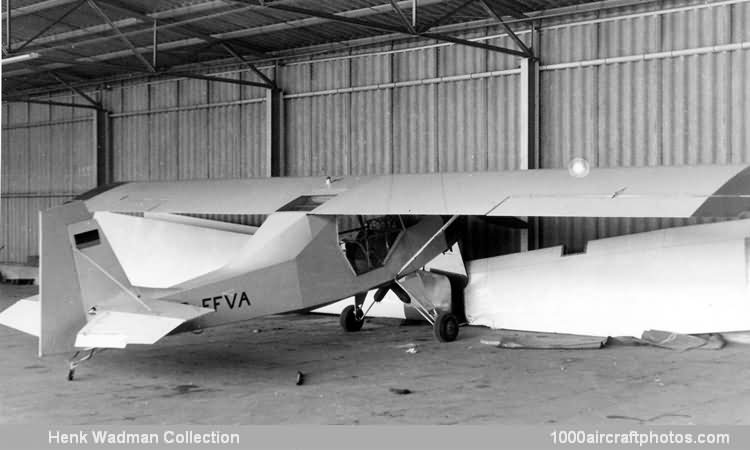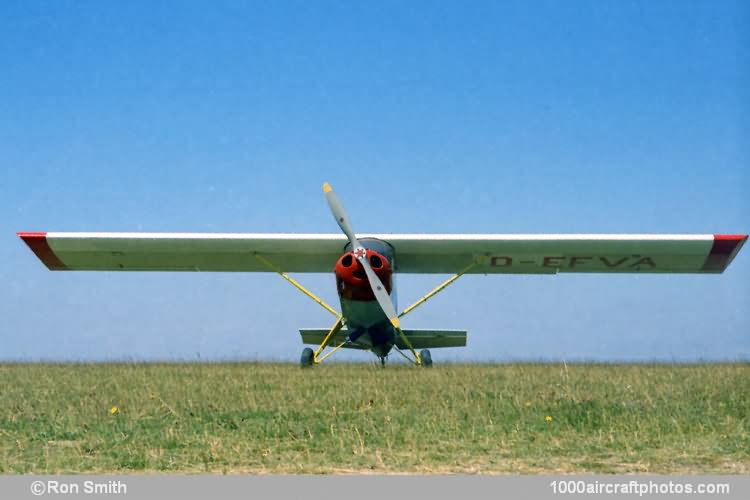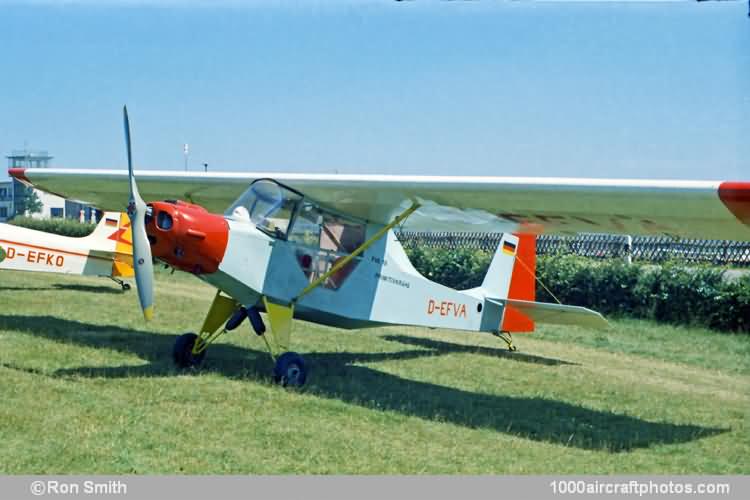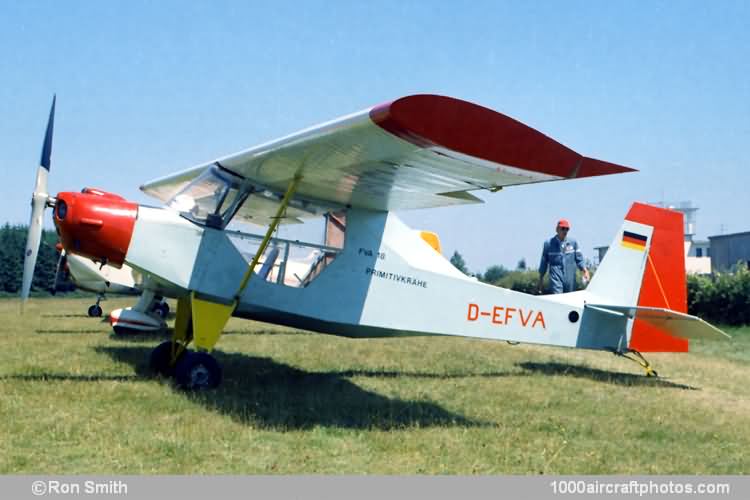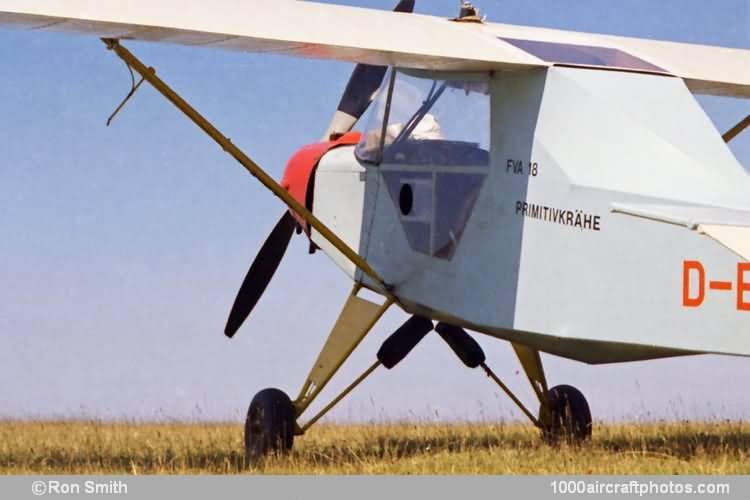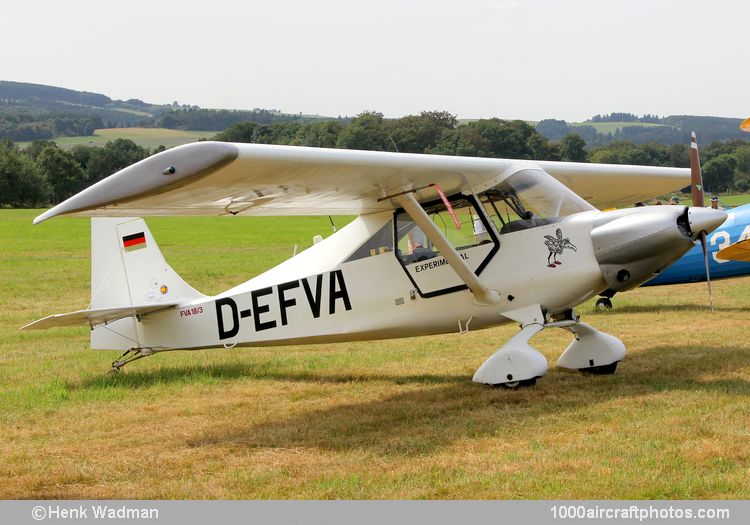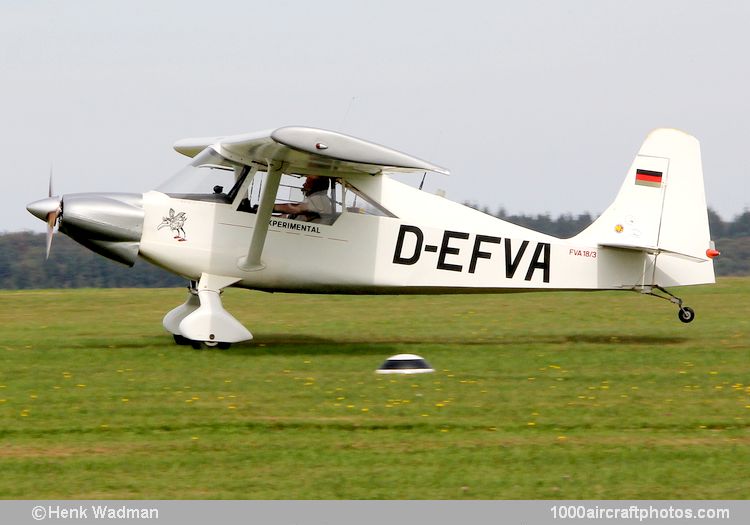11/30/2010. Remarks by
Johan Visschedijk: "The Flugwissenschaftliche Vereinigung Aachen (FVA, Flight Science Association Aachen), that was formed in 1920, has designed and built a number of aircraft and sailplanes, including the FVA-18 Primitivkrähe (Primitive Crow).
FVA-18 Primitivkrähe (
Ron Smith Collection)
Design of the FVA-18 started in 1958, and construction of the prototype began in the following year. Registered D-EFVA and powered by a 36.5 hp Pollmann HEPU KFM 40/3500-48 (40 hp modified Volkswagen) engine, driving a Hoffmann fixed-pitch two-blade wooden propeller, the first flight was made on September 16, 1965. Certification in a restricted category was granted by the LBA (Luftfahrt-Bundesambt, Federal Aviation Agency) on September 23, 1968.
FVA-18 Primitivkrähe (
Ron Smith Collection)
The FVA-18 tandem two-seat lightweight cabin monoplane had a fuselage of welded steel-tube structure with fabric covering. The tubular strutted wing was of all-wood I-section single-spar structure, with plywood skin extending back from leading edge to spar, and fabric covering aft of spar. The conventional ailerons were of wooden construction with fabric covering, and had no flaps nor trim tabs. The wire-braced tail unit was of welded steel-tube structure, and had a fixed incidence tail plane, with a manually-adjustable trim tab on elevators.
The Pollmann engine had a persistent overheating problem, eventually it was re-engined with a 60 hp Limbach. Redesignated FVA-18b Primitivkrähe, it was first flown on May 17, 1972. The lightweight aircraft had soaring qualities which were demonstrated to the public at an Oldtimer meeting at Dortmund-Wickede. While flying at 492 ft (150 m) the engine was switched off and the aircraft climbed, while circling the airfield, to a height of 1,476 ft (450 m). Soon thereafter the aircraft had an landing gear mishap and was stored, its registration was cancelled June 9, 1972.
